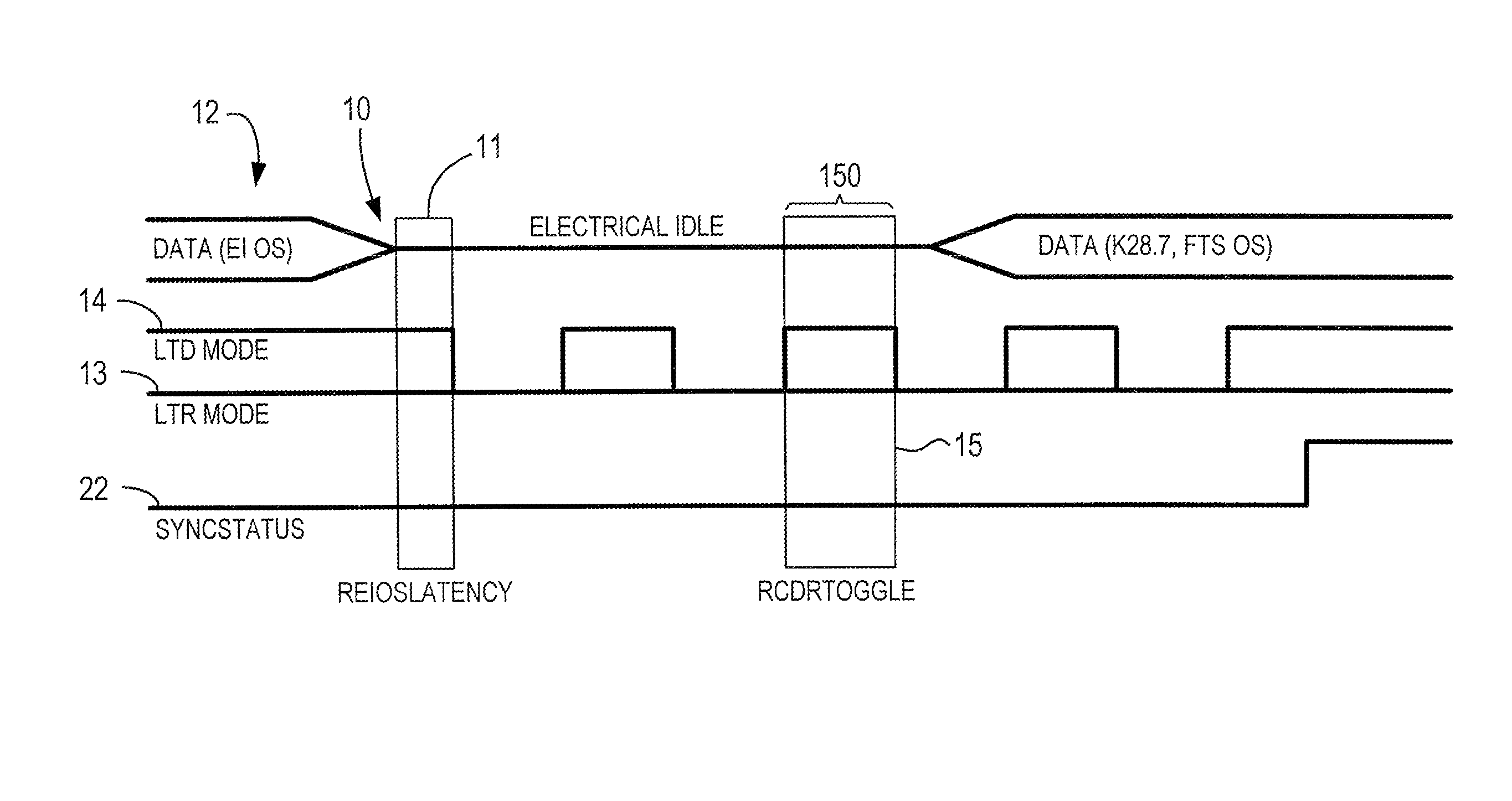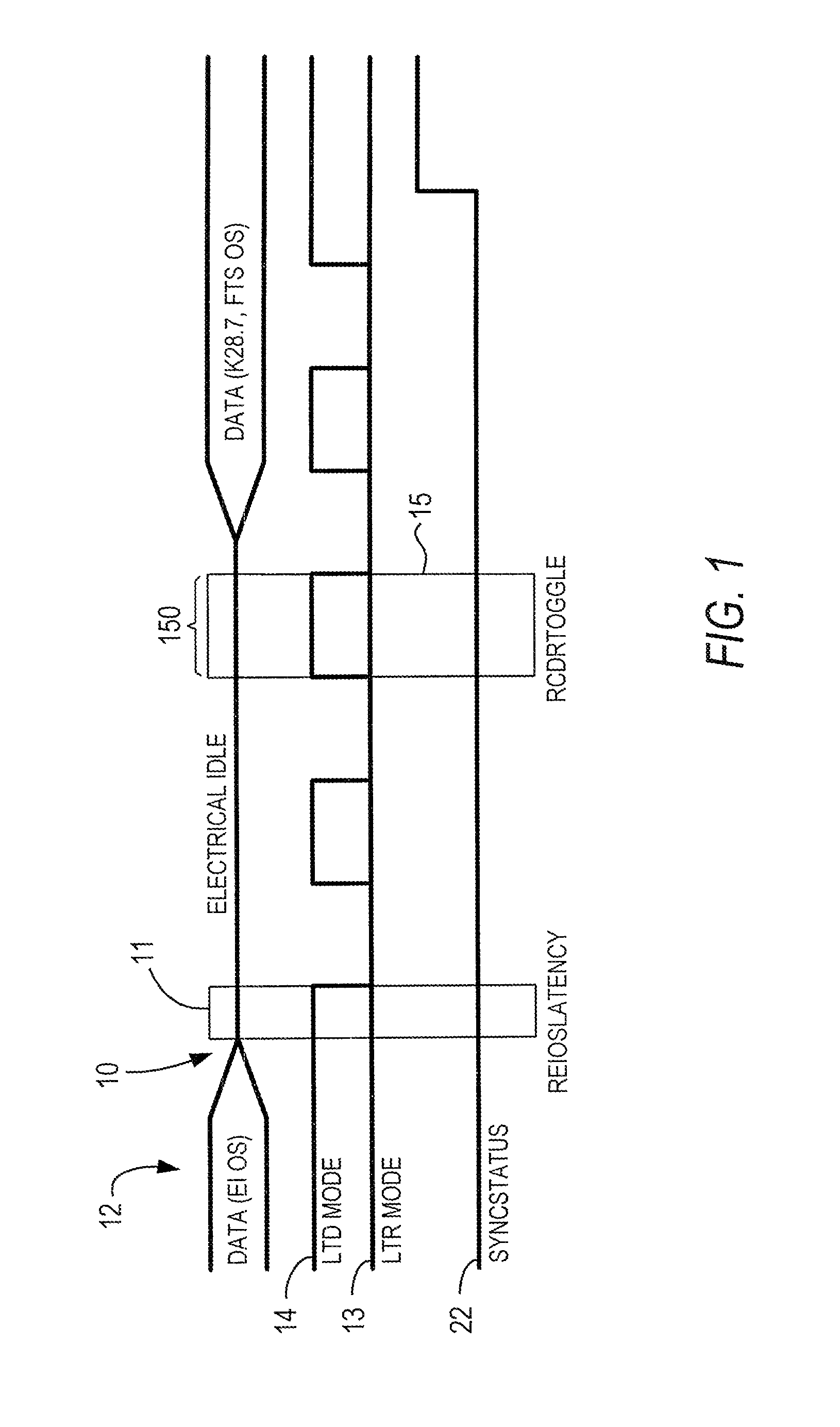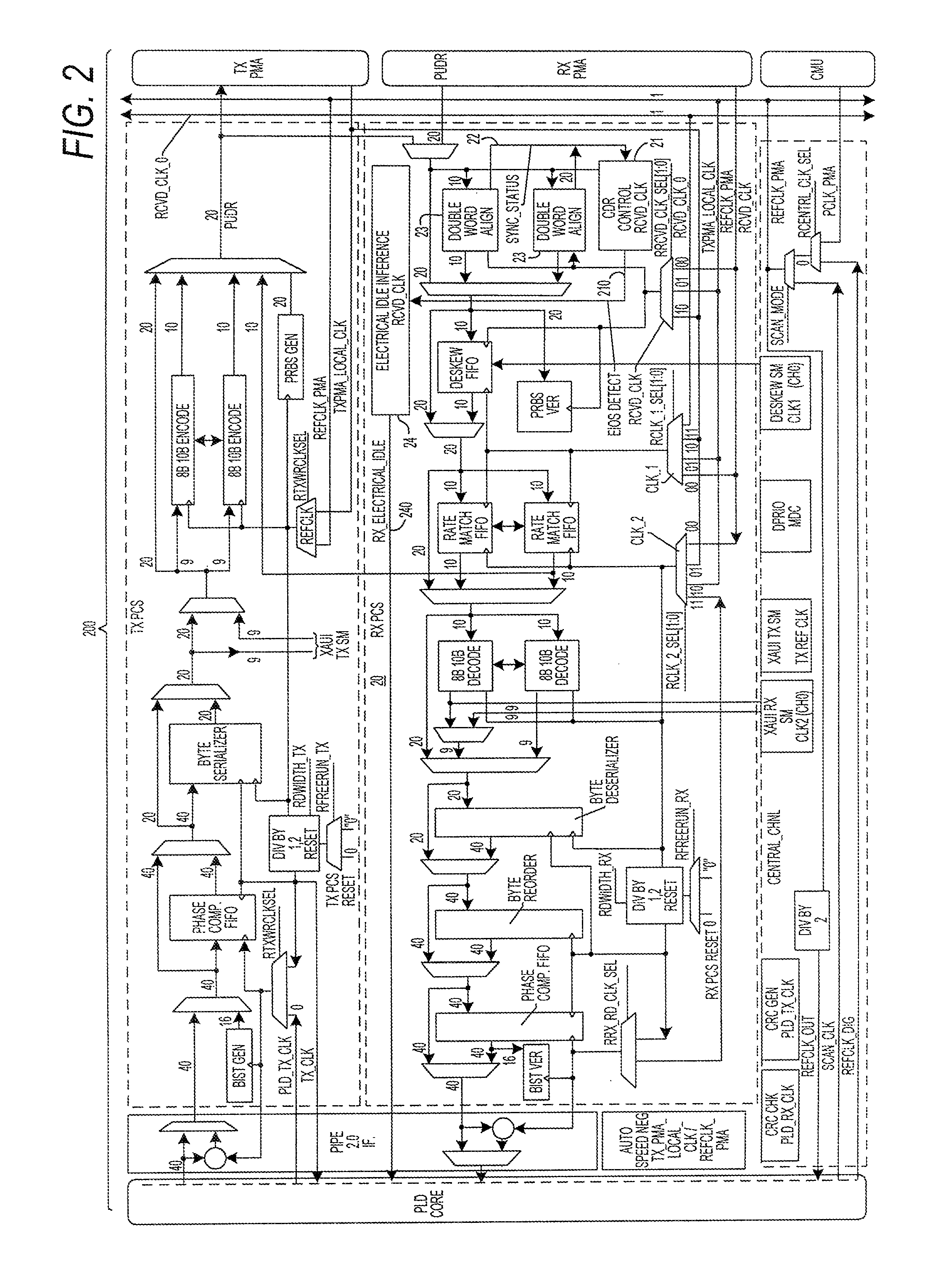CDR control architecture for robust low-latency exit from the power-saving mode of an embedded CDR in a programmable integrated circuit device
a programmable integrated circuit and control architecture technology, applied in the direction of digital transmission, synchronisation signal speed/phase control, instruments, etc., can solve the problems of increasing unreliability of the approach and not being feasible for the vast majority of clock data recovery (cdr) implementations, so as to avoid unnecessary delay in the detection of the synchronization signal and minimize drift
- Summary
- Abstract
- Description
- Claims
- Application Information
AI Technical Summary
Benefits of technology
Problems solved by technology
Method used
Image
Examples
Embodiment Construction
[0014]In a common implementation, a high-speed serial transceiver is divided into a physical medium attachment (PMA) portion or module which communicates with outside devices, and a physical coding sublayer (PCS) portion or module which performs serial processing of data, for transmission to, or that is received from, those outside devices. CDR circuitry typically is part of the PCS.
[0015]It is known to provide CDR circuitry with (a) a Lock-to-Data (LTD) state which is the normal operational state of the CDR circuitry, in which the circuitry locks to, and recovers the clock from, incoming data, and (b) a Lock-to-Reference (LTR) state which is a state in which the circuitry is not trying to perform its LTD function, but is locked to its own reference clock to minimize drifting to avoid providing a false output. The digital CDR control architecture of the present invention preferably drives the LTR and LTD outputs to the Physical Medium Attachment (PMA) in such a way as to align the l...
PUM
 Login to View More
Login to View More Abstract
Description
Claims
Application Information
 Login to View More
Login to View More - R&D
- Intellectual Property
- Life Sciences
- Materials
- Tech Scout
- Unparalleled Data Quality
- Higher Quality Content
- 60% Fewer Hallucinations
Browse by: Latest US Patents, China's latest patents, Technical Efficacy Thesaurus, Application Domain, Technology Topic, Popular Technical Reports.
© 2025 PatSnap. All rights reserved.Legal|Privacy policy|Modern Slavery Act Transparency Statement|Sitemap|About US| Contact US: help@patsnap.com



